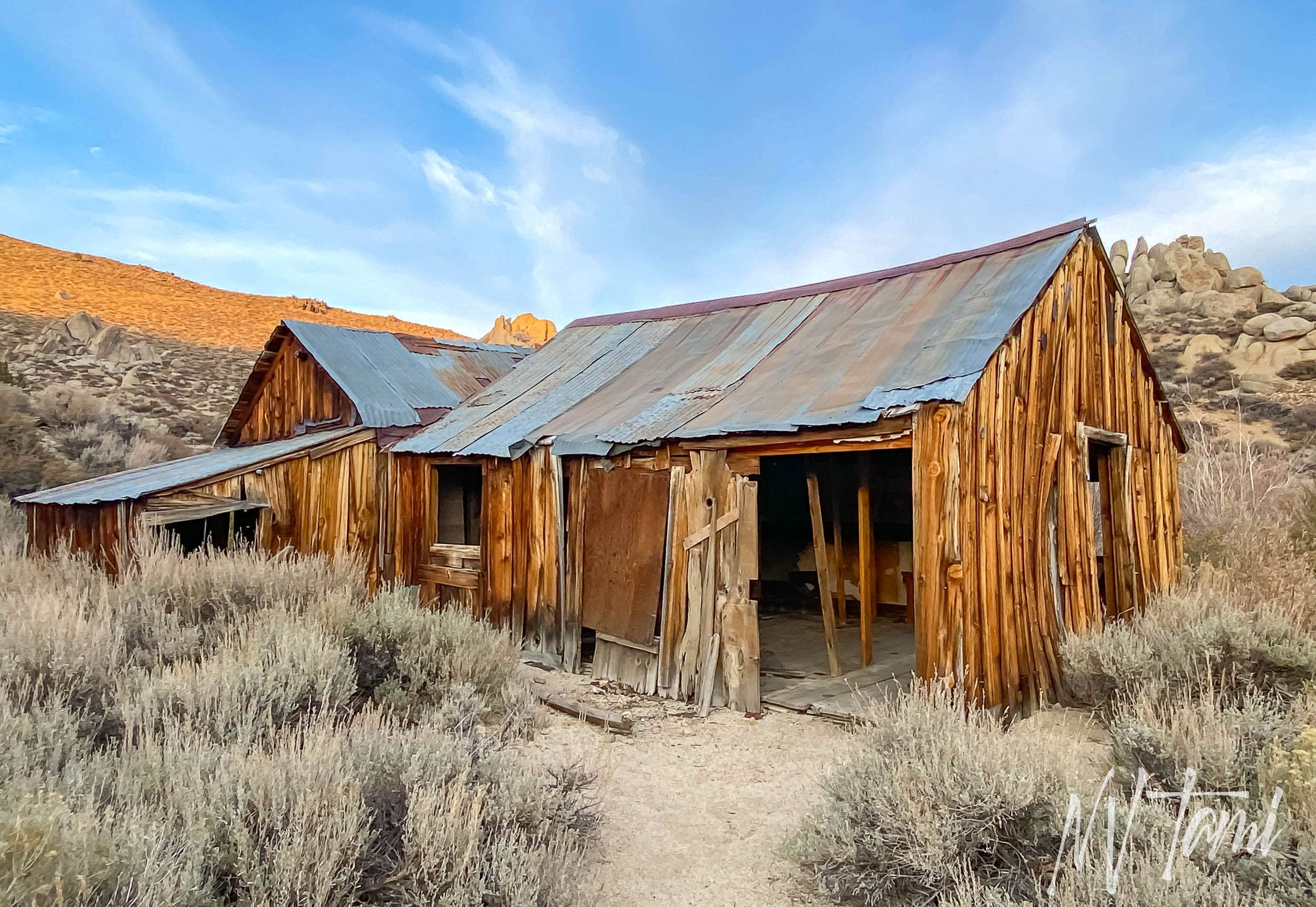
Monoville, California was the first official “town” on the eastern slope of the Sierra. The town did not live long, but its legacy continued for its role in the founding of the most famous ghost town in California, Bodie. The ghost town of Monoville lives on in stories including a petrifying situation.
Dog Town
In 1857, German prospector Cord Norst and his wife Mary, a native American, set up camp on the creek. They built a dugout house with rock walls on the hillside and panned gold for a living.

Prospectors panned for gold and built dugout houses with rock walls. While the settlement soon became a ghost town, this was where it all started, on the confluence of the Virginia and Dog Creeks.

Hearing of their discovery, Mormons from Nevada headed south to stake claims along the creeks. Dog Town soon became a “bustling little community” of 100 miners.

First gold rush east of the Sierra
On July 4, 1859, Dog Town held Independence Day celebrations. A town resident left the festivities and wandered the hills east of Dog Town. He rested, picked up some dirt and found it contained gold.

Cord Norst claimed credit for finding Dog Town, but some say it was a prospector named Chris. Whoever the errant partygoer was, he returned to the revelry in time for a meal of beans, bacon and bourbon. The discoverer was a “big talker” and bragged about his find and paid for mining supplies with gold dust.
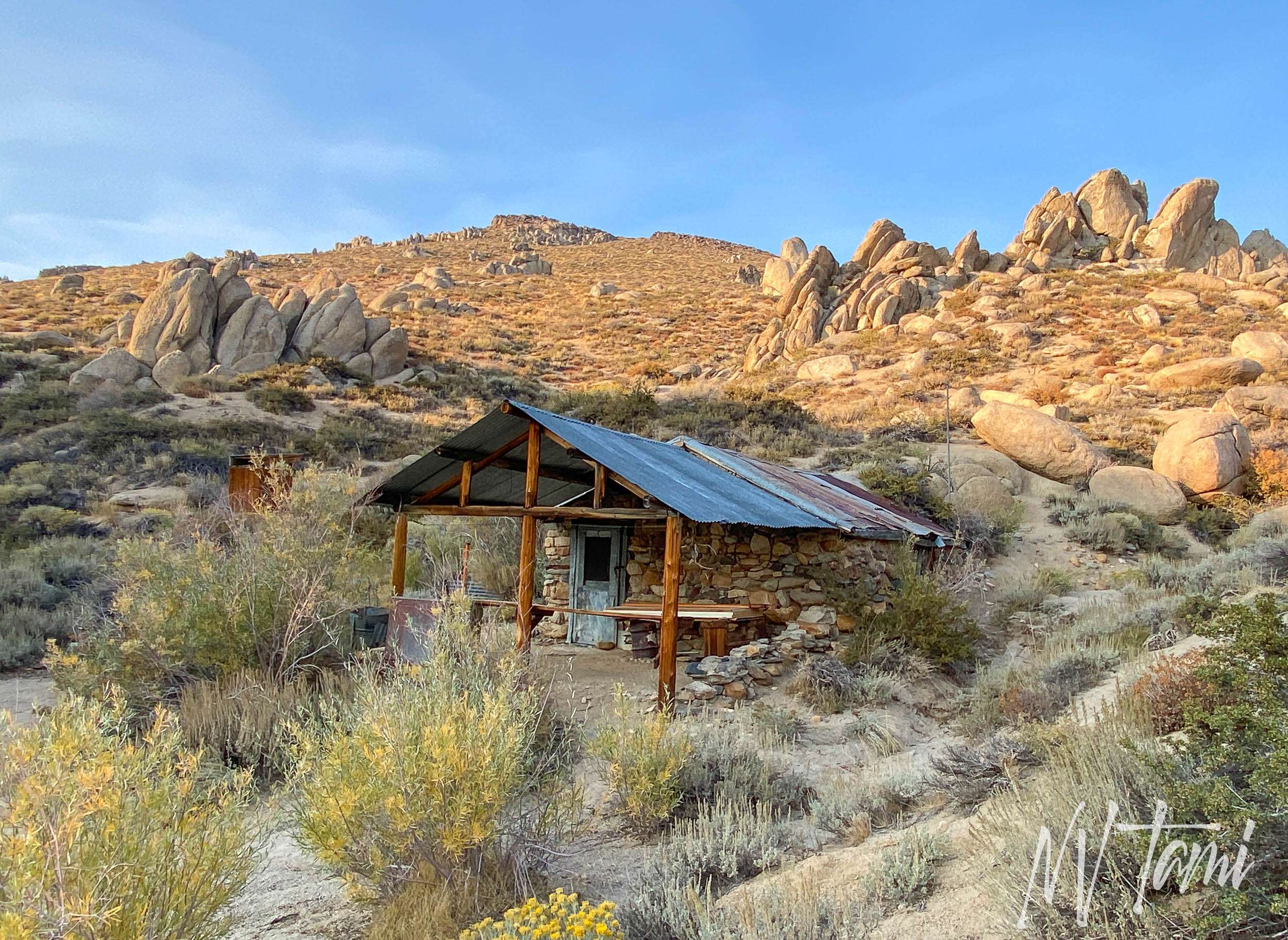
Word of his discovery spread like wildfire and it was rumored that gold was on the ground for the taking. Most of Dog Town picked up their tents and moved them northeast one mile. Soon came miners from Mono Pass, Carson Valley, and Sonora. The find became the first gold rush east of the Sierra.
Monoville

Developers laid out streets and parcels. The town soon replaced tents with lumber structures, which were “whipsawed”. Before long, five sawmills were in operation, and the town changed from dugouts and tents to wooden structures. Residents erected twenty-one buildings; twenty-two of those were saloons.
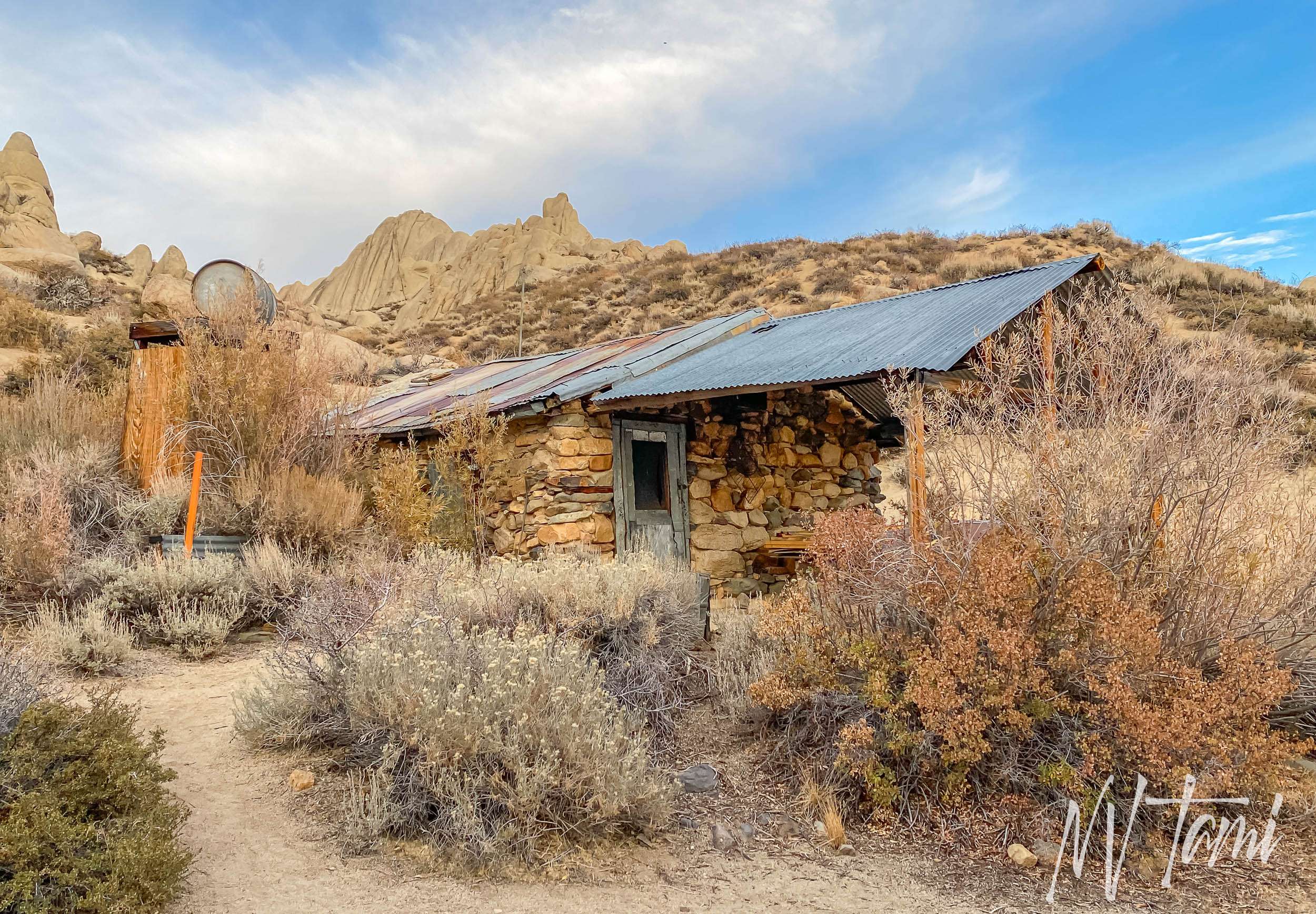
The first summer, Monoville claimed a population between 500 and 900 people. A post office opened on December 3, 1859. The office was in Rattlesnake Gulch, and Isac Farwell was the first postmaster.

(Credit: Online archives of California)
While the location of Monoville was beautiful, it was also isolated and suffered extreme winters. During the first winter, only 150 people stayed in Monoville. Little mining occured as placers were frozen. Snow started on November 15, 1859, and didn’t stop until it was 5 feet deep.

The spring thaw brought renewed interest in Monoville. The town’s population exploded to 1,000. Some report the number was closer to 3,00: 500 “sober” and 2000 “intoxicated persons.”

Monoville grew to include 40 structures, including 22 saloons, stores, gambling halls, hotels and boarding houses, and restaurants. One saloon boasted a two-lane blowing alley.

Monoville’s role in Bodie and Aurora
Miners used Monoville as a staging point and spread out, prospecting over the eastern Sierra and Bodie Hills. One of those prospectors was William S. Bodey. In 1895, William discovered rich ore east of Monoville. In November, he and his companion set out to resupply in Monoville, but a blizzard hit. The companion continued the journey once Willam could no longer go on. His frozen body was discovered the following spring, and the now-famous town of Bodie was named in his honor.

In 1860, prospectors discovered silver east of Dog Town. The town of Aurora was founded and soon became the major center of the area. Dog Town residents picked up their belongings, and in some cases, their houses, and relocated to Aurora.

Monovilles downfall was its remote location. The post office closed on April 16, 1862, after only 2.5 years of operation. In 1863, the population had decreased to 300. By 1868, town residents abandoned Monovile, and the few remaining buildings suffered from neglect and heavy snow. The diggings at Monoville and Dog Town were reworked in the late 1870s and early 1880s, but Monovllle was forgotten.
Monoville, Califonria ghost town
People consider two sites Monoville.
The canyon


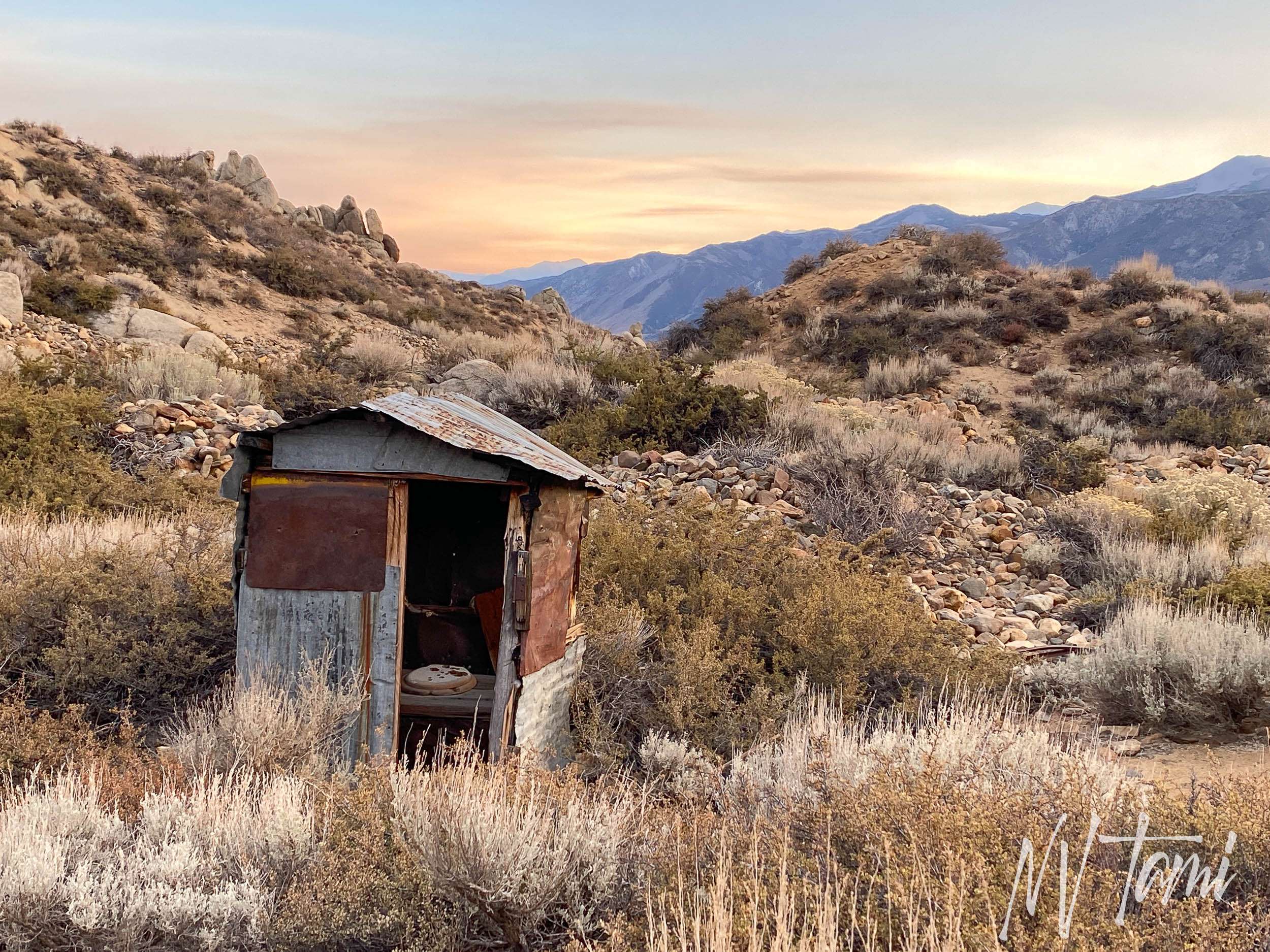
The gulch
A second site is approximately a mile away and closer to Mono Lake. Many consider this part of Monoville. But the two images of Monoville clearly depict the town in the rocks. Perhaps this was more of a neighborhood?
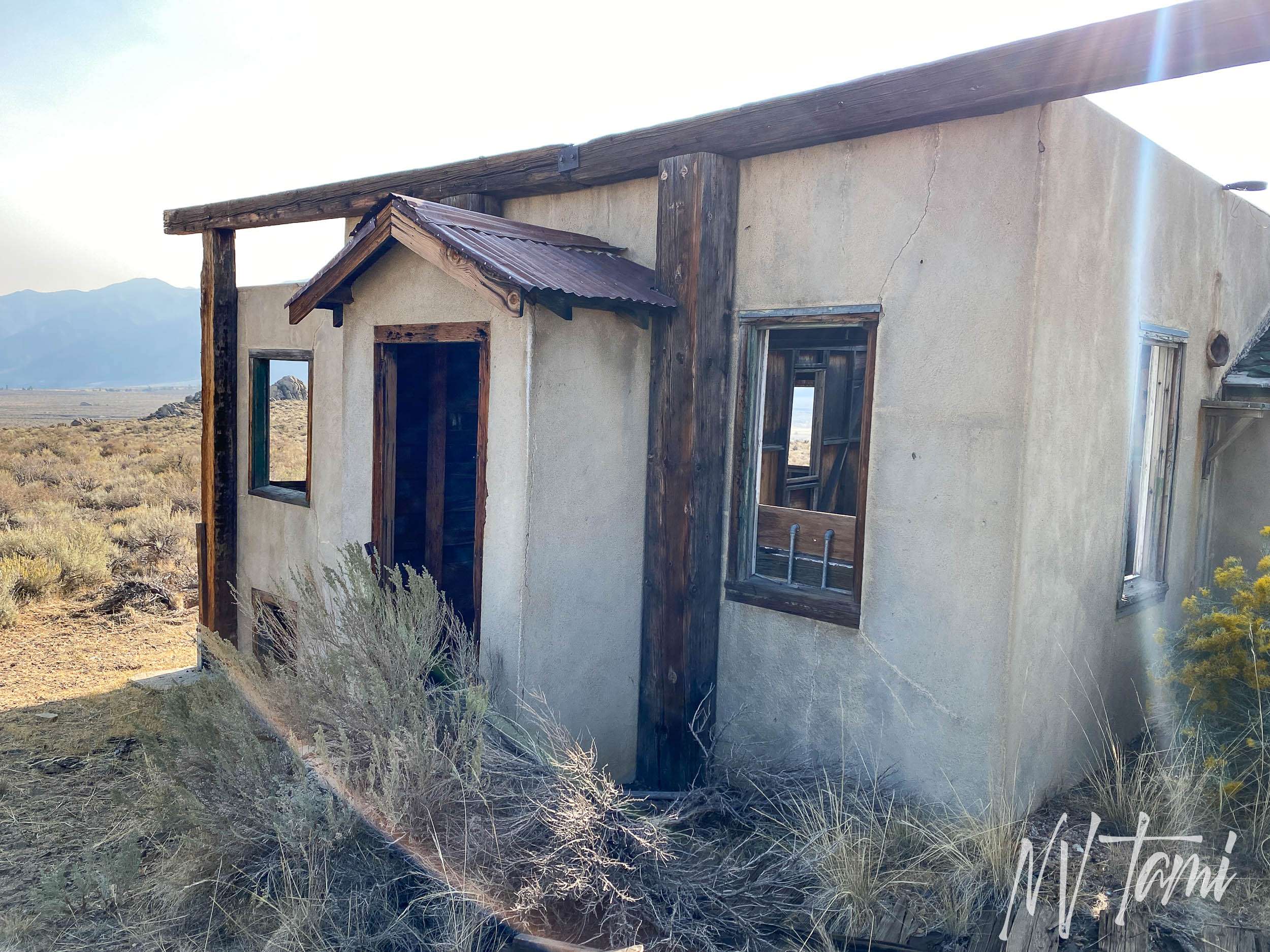
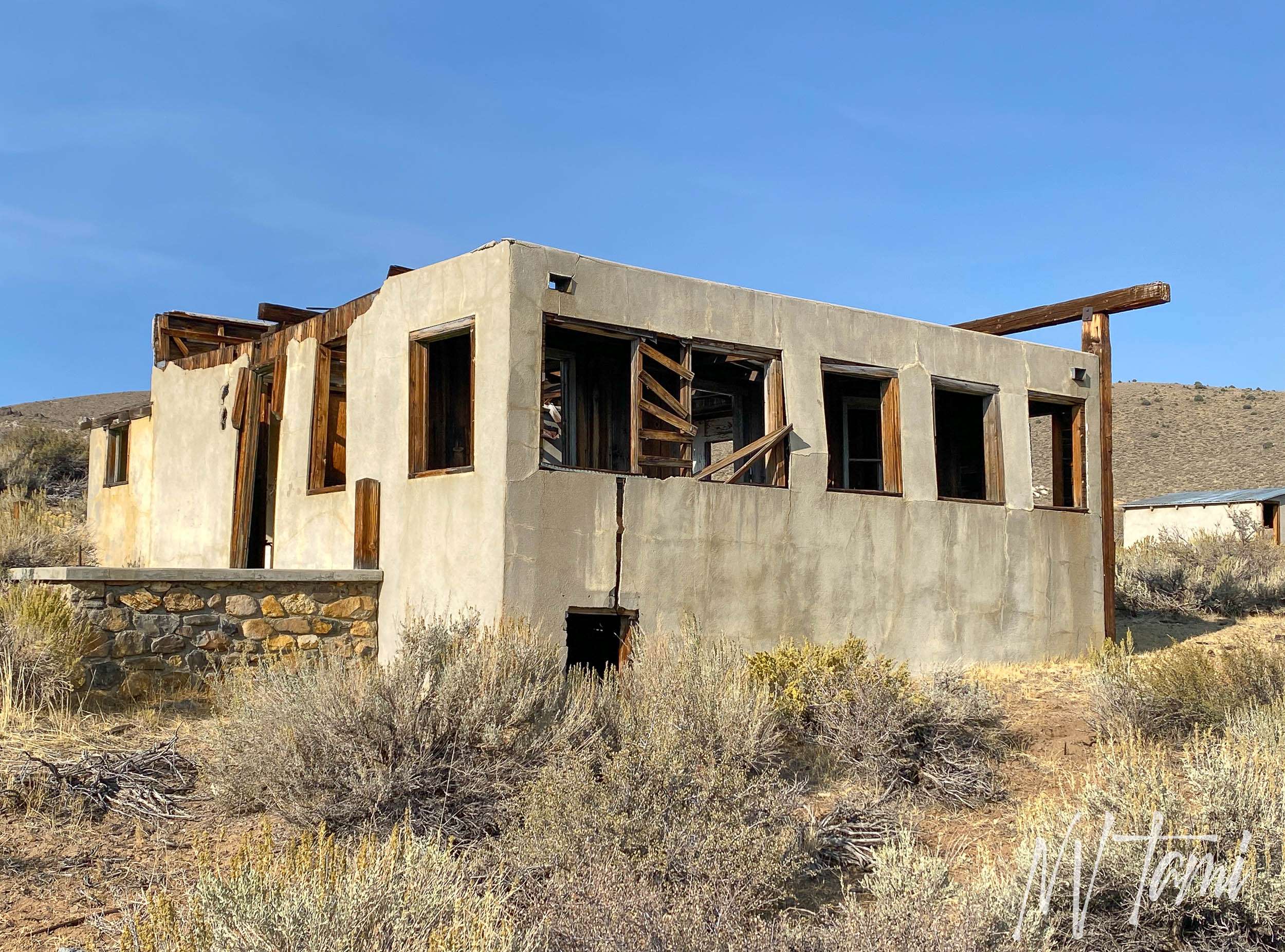
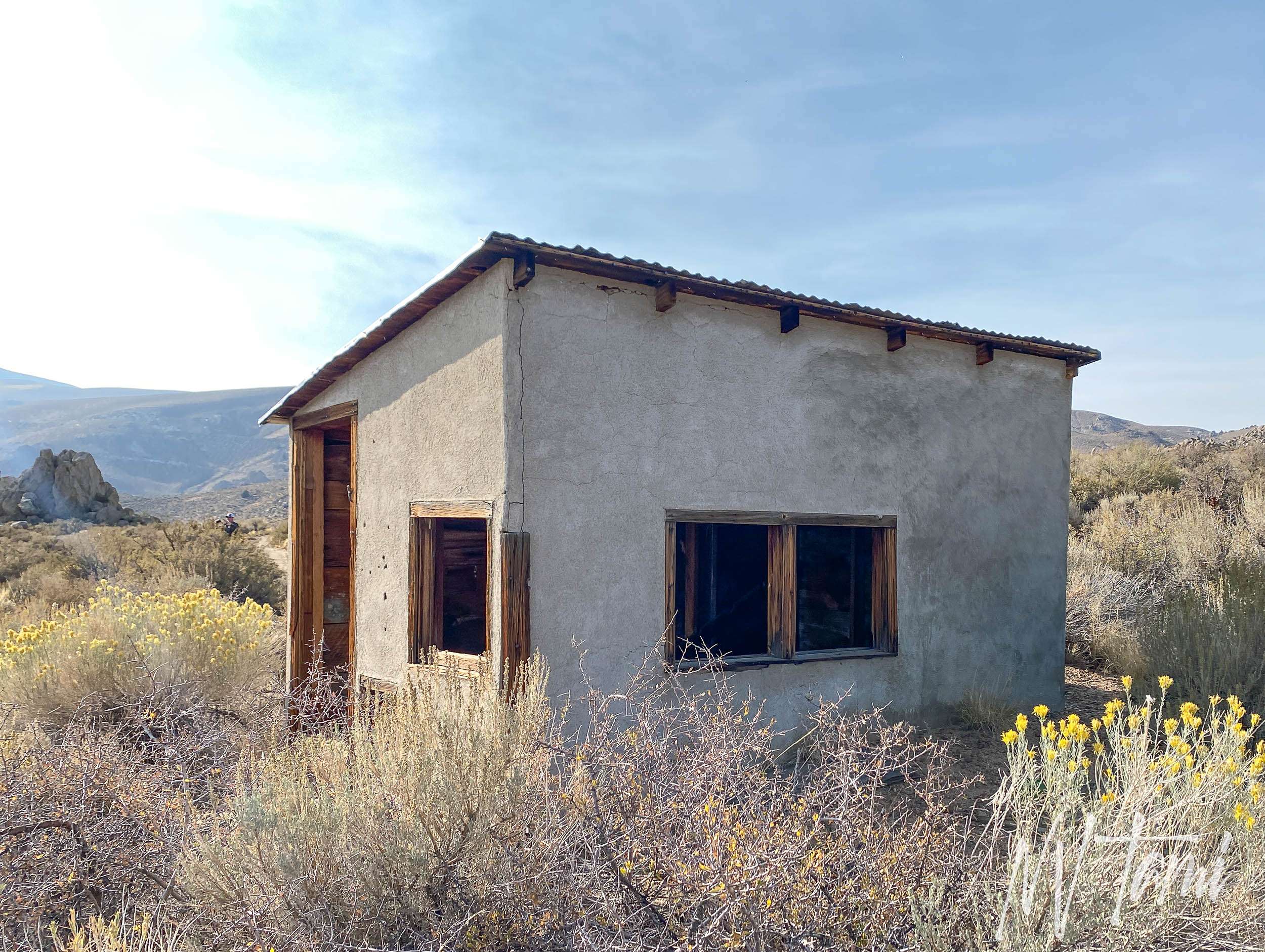
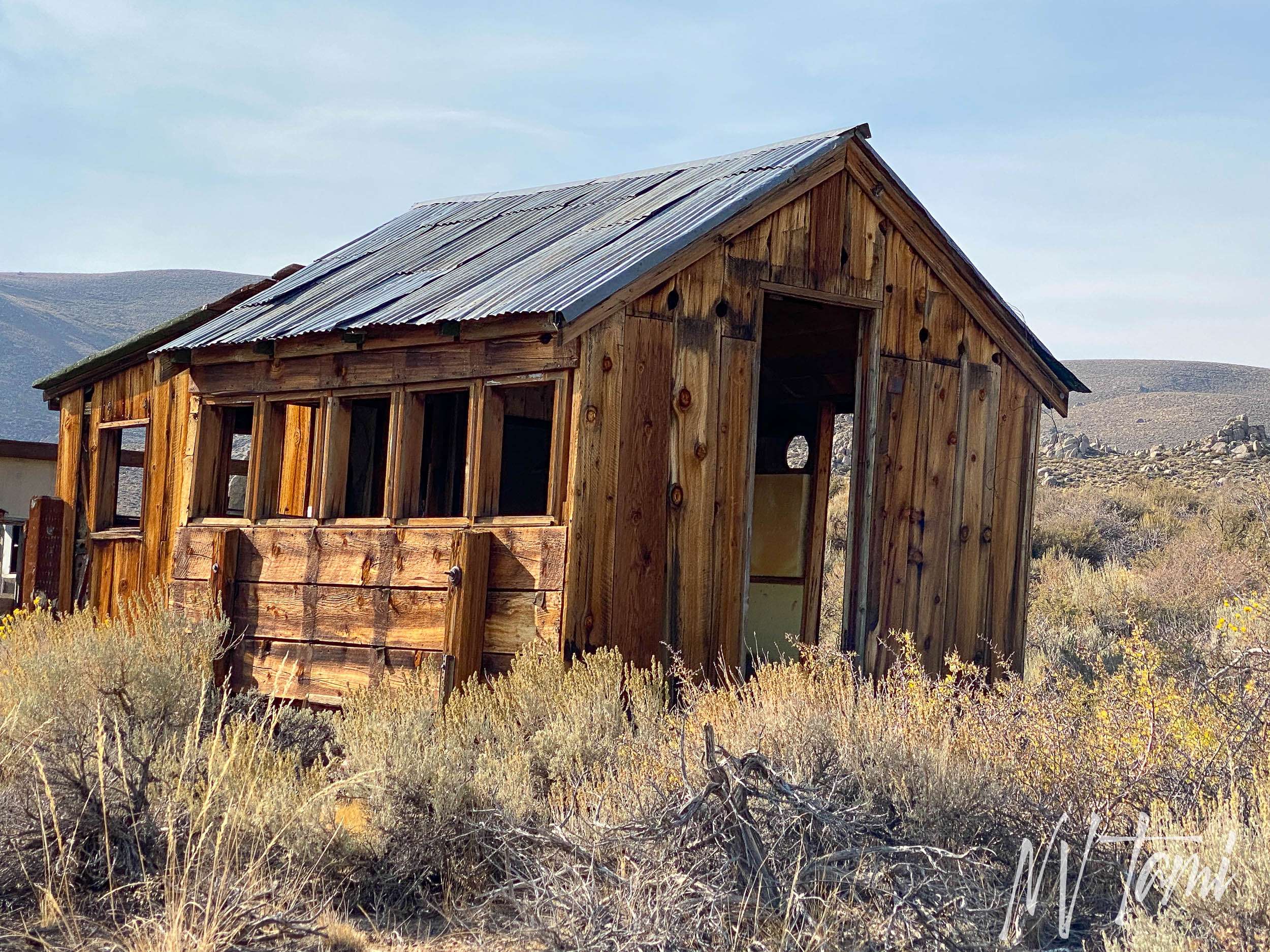




Honey Badger at Monoville
On my first visit to Monoville, we had beautiful cotton candy-colored skies. This is still one of my favorite Honey Badger photos, even though it was before all her modifications.
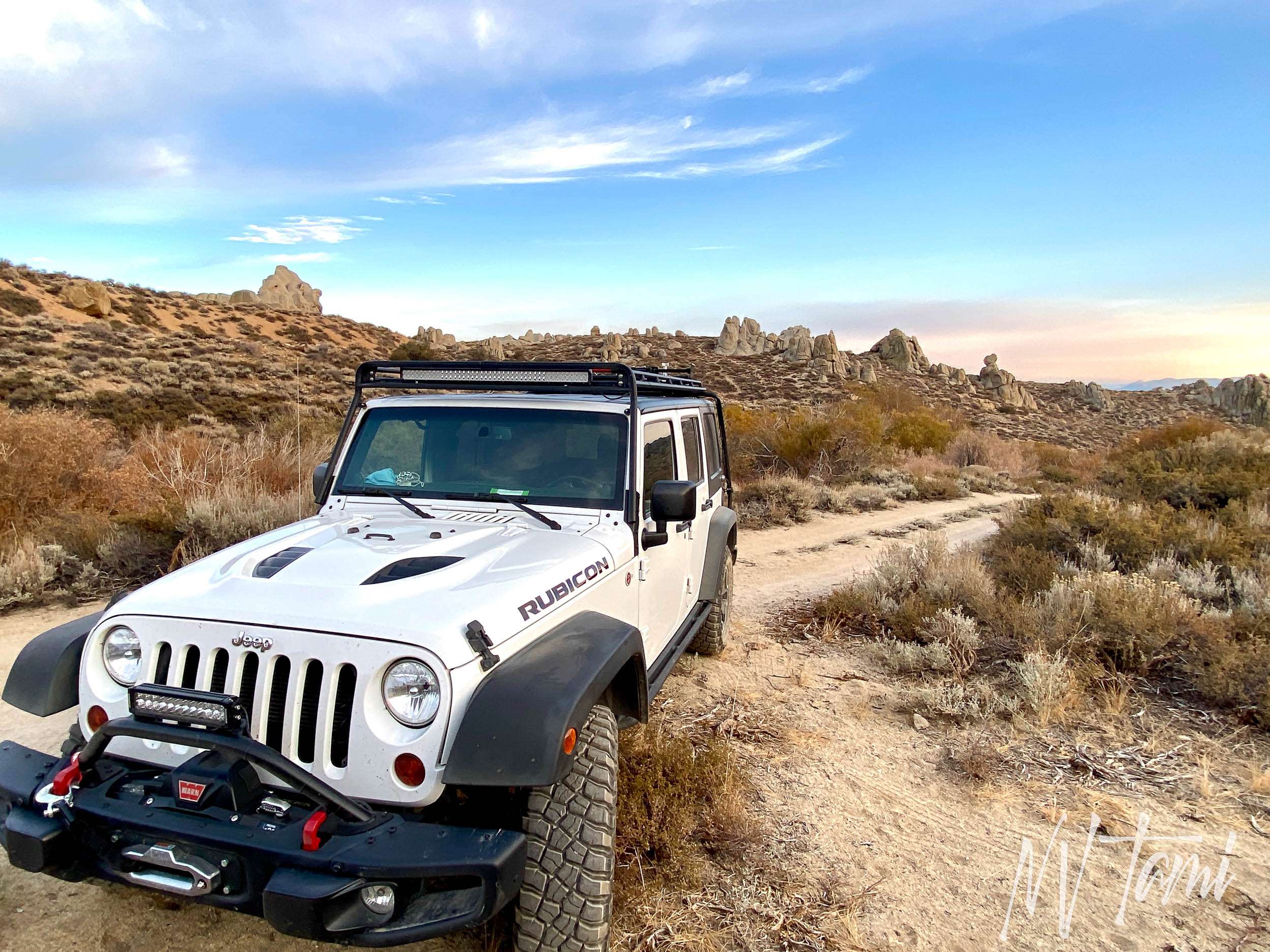
Adeline Carson Stilts
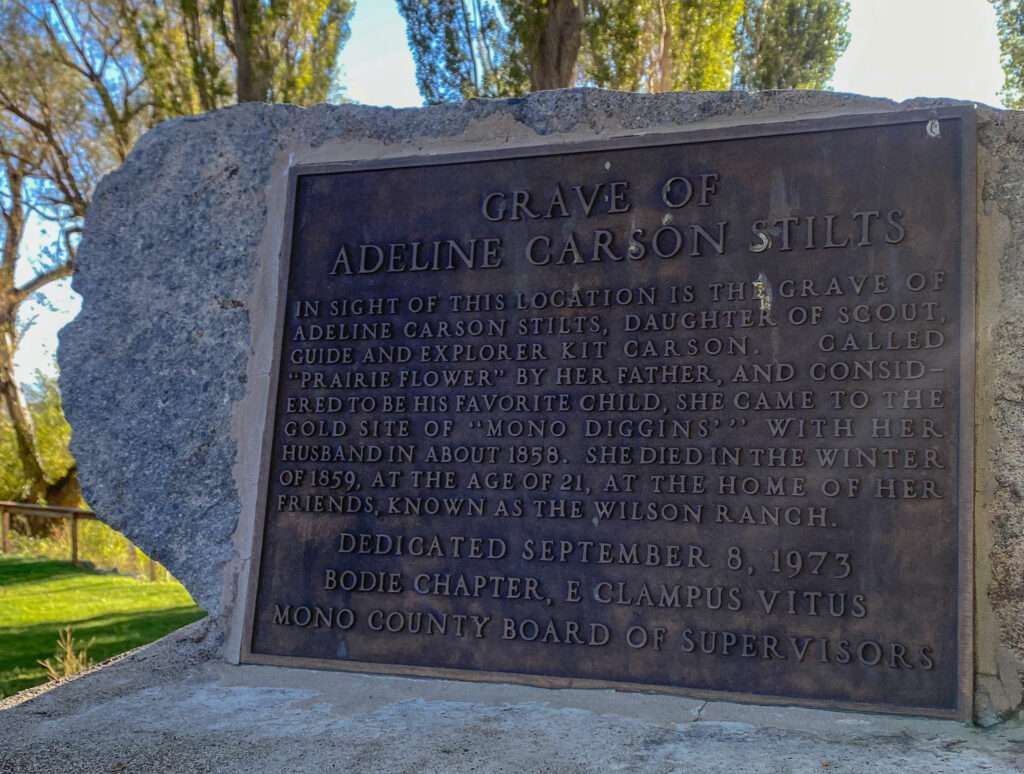
Adeline Carson Stilts was known as “Prarie Flower” by her father, the famed Kit Carson. Along with her husband, she moved to Monoville in 1858. As was all too common at the time, she died in childbirth the following year. Family buried her along Mono Lake. The exact site is unknown but it is on the grounds of what is now the Mono Inn.
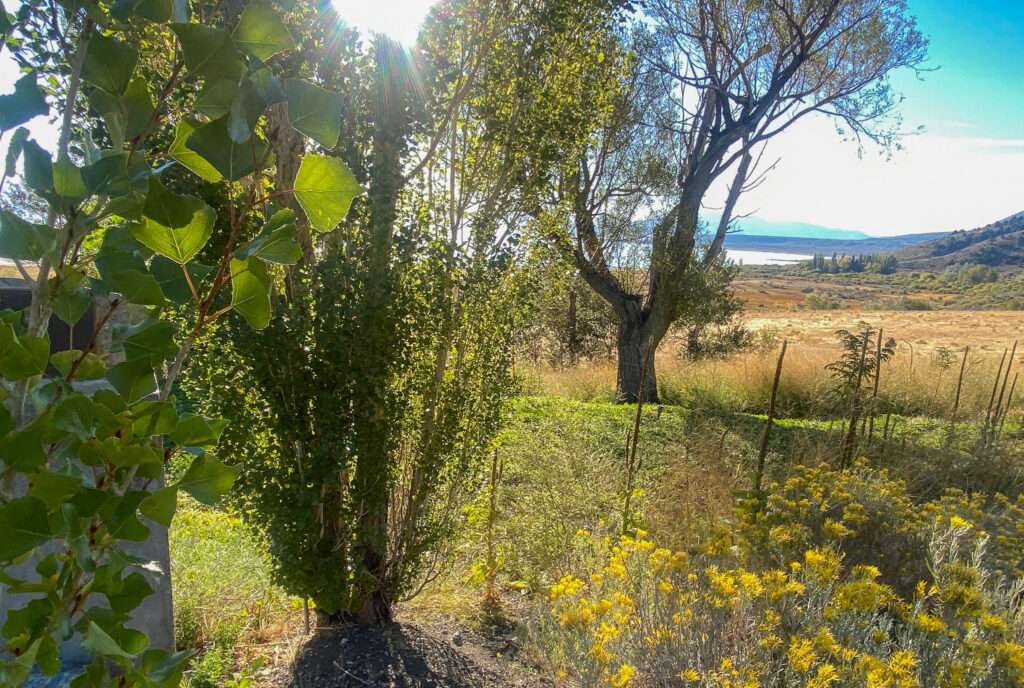
I looked at Mono Inn online and want to go back for dinner. In addition to beautiful grounds, they have a fantastic farm-to-table menu.
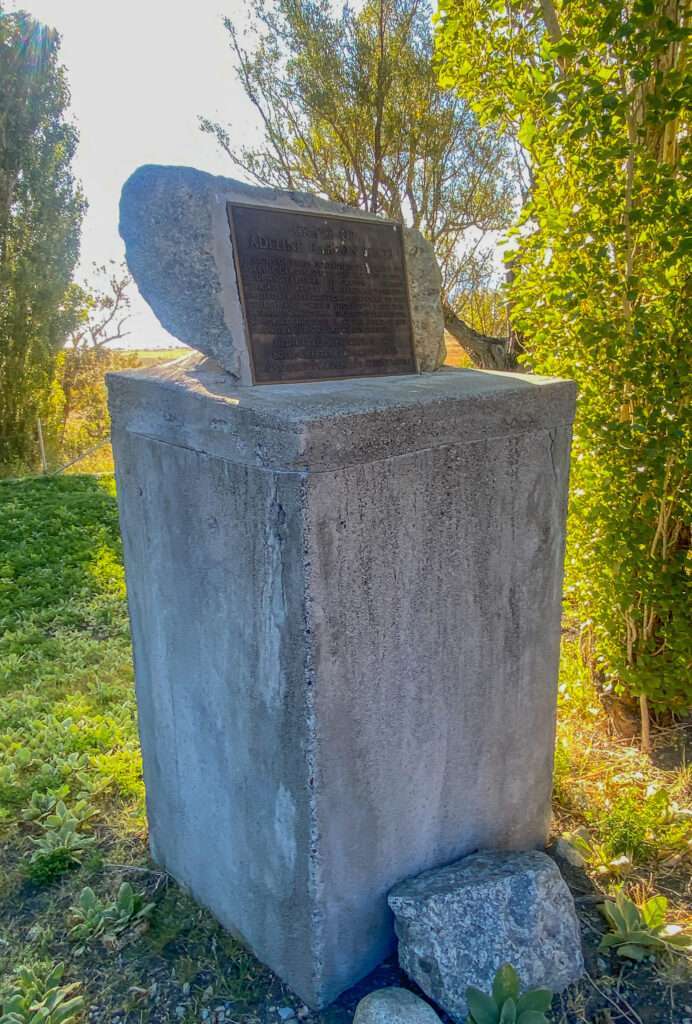
A petrifying situation
Jim Townsend, author and publisher, relayed a quirky story about Monoville. The story goes that Louis Samann was originally from Hanover, Germany and made a living hunting antelope in Yosemite. In 1856, he traversed the Sierra, settled in Dog Town, and then moved to Monoville. Reportedly, Samann put “Indians” into Mono Lake, where they would reach a state of “perfect certification” or petrification in three months. Samann planned to use the bodies as fence posts or to send them to the Academy of Science in Philadelphia and the Medical Museum at San Fransisco.
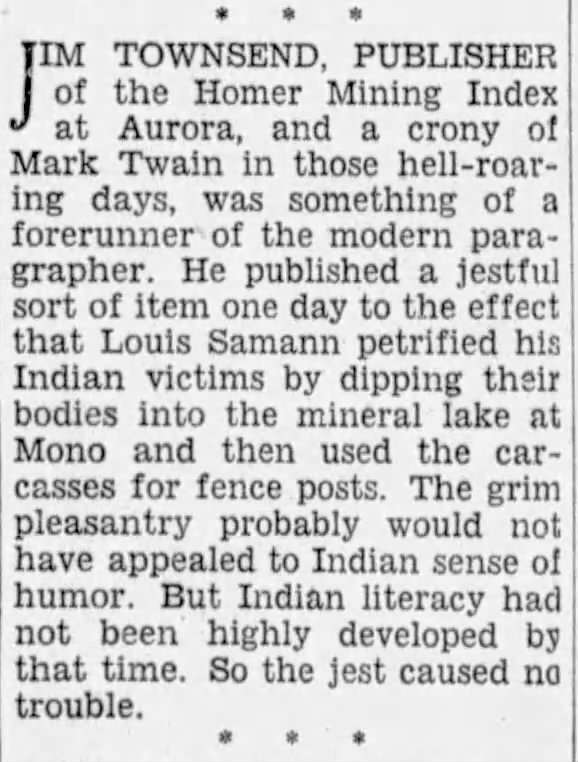
Palo Alto, California · Monday, March 20, 1939
Alas, Townsend was a contemporary of Mark Twain. They were both members of the Sagebrush Writers movement, known for fanciful tales and hoaxes of the Wild West. Townsend’s nickname was “Lying Jim,” he was said to be “The most original writer and versatile liar that the West Coast, or any coast, ever produced.”
Samann was delighted the outlandish yarn spread as far as Washington, D.C.
WANT MORE GHOST TOWNS?
For information on more than five hundred ghost towns in Nevada & California, visit the Nevada Ghost Towns Map or a list of Nevada ghost towns.
Learn about how to visit ghost towns safely.

References
References
- Atlas Obscura: Sinnamon Cut
- California Office of Historic Preservation: Monoville and Mono Diggings
- Calisphere
- DeDecker, Mary. Mines of the Eastern Sierra. La Siesta Press, 1993. Pages 15-16
- Explore Historic California: W. S. Bodey Revisited
- Guddle, Edwin G. California Gold Camps: A geographical and historical dictionary of camps, towns and localities where gold was found and mined: Wayside stations and trading centers. University of California Press, 1975. Pages 97-98, 221.
- Mitchell, Roger. Inyo-Mono SUV Trails. A guide to 40 interesting and scenic four-wheeling excursions in Inyo and Mono Counties. Track and Trail Publications: 2003. Pages 42-46.
- Mono Lake Committee: Pioneers and Miners
- The Natural Wealth of California: Comprising Early History; Geography, Topography, and Scenery; Climate; Agriculture and Commercial Products; Geology, Zoology, and Botany; Mineralogy, Mines, and Mining Processes; Manufactures; Steamship Lines, Railroads, and Commerce; Immigration, Population and Society; Educational Institutions and Literature; Together with a Detailed Description of Each County
- Nevada Appeal: California’s Dog of a mining camp
- Nevada Expeditions: Monoville, California
- Salley, H.E. History of California Post Offices. The Depot, 1991. Pages: 57, 139.
Ryan says
Great writeup and pictures on Monoville. I have a question for you. In all of your research did you happen to come across anything stating the size of gold found or monetary values of gold recovered? Was anything mentioned of nuggets vs. fine gold?
Tami says
Thank you, I’m glad you enjoyed it.
I didn’t find anything about the size of the gold. I remember finding the production at Dog Town was unknown, but I can’t remember if that included Monoville. If I had found a total production, I should have listed it. My guess is was so short-lived and early that production might not have been recorded.
Jim Wetzel says
Tami,
Re Dogtown, are you referring to the site on the North side of 395 across from the road to Bodie?
I’ve driven by that site numerous times but never stopped to explore, nor have I previously heard of Monoville.
Thanks for the writeup!
Jim
Tami says
Glad you enjoyed the article. Dog Town (Or Dogtown) is on the west side of Highway 395. I think it is just south of the turnoff to Bodie. There is a wide turn-out with the markers. Monoville is a little father south and east.
Lori says
Great story Tami! So much information and interesting history. A long time ago, about 25 years, there was a ad in the paper. It said “mineral rights for sale”. It turned out it was for the diggings next to the highway. I’m sure the
state of California wouldn’t appreciate mining all those rocks. I think it was a scam but I am happy we went to discover that beautiful place!
Tami says
Glad you enjoyed this fun piece of history.
I have heard people still placer mine the old diggings. That would be an interesting situation if they wanted to mine the area again. I wonder if the old claims exist?
Stephen Landuyt says
I enjoyed your piece about Monoville. Great photos and drawings that show Monoville was located at an elevation among the rocks. I will be driving Hwy 395 through Mono County later in July. In the photos you were driving a Jeep. Is a 4-wheel drive vehicle necessary on the dirt roads to Monoville? Also, is the former Monoville town site now on private property?
My g-g-grandfather was a trader in Monoville back in its day, so I have a personal reason for wanting to explore the former town site.
Tami says
I haven’t been this year. Someone said the family who owns the one cabin goes up in a Subaru. I would take my Grand Cherokee.
Nothing was marked private or no trespassing but the cabin is obviously well cared for by someone.
terry s. says
the sixth picture has a stone building with a tin roof and porch, what was that building?
Tami says
That is a cabin at Monoville. I heard a family from Berkley owns it and does reunions there.